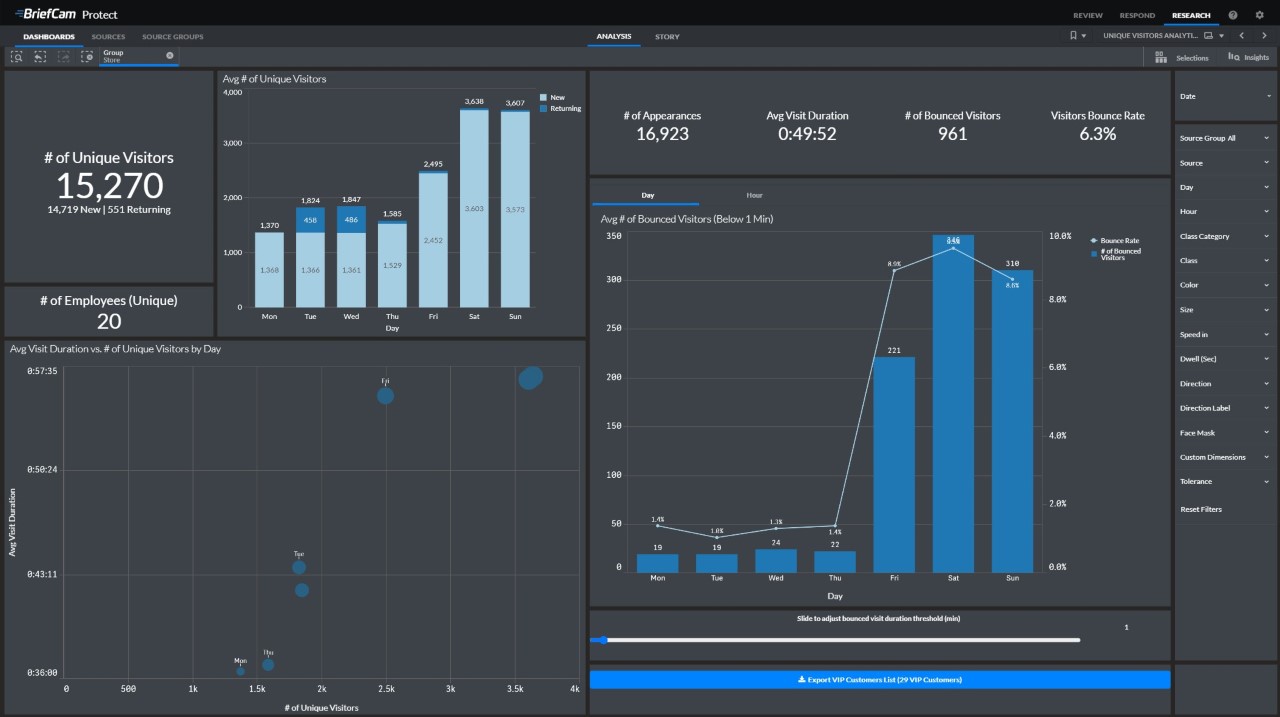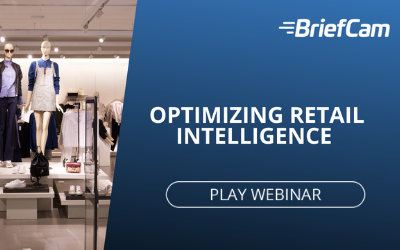Uncovering In-Store Traffic Analytics with Intelligent Video Surveillance

One Small Technology Solution, One Giant Leap for In-store Retail
E-commerce has come a long way in the decades since the invention of Internet retailing. Today’s retailers can use extensive analytics to understand how visitors navigate and interact on their sites, from unique page visits to return traffic and bounce rates. They can understand how shoppers were referred to the online store and whether digital advertisements or content influenced their interactions with product pages or even purchases. With access to deep insight into customer trends, interests and demographics, retailers can make intelligent decisions about advertising, marketing, and merchandising that can seriously benefit their bottom line.
Historically, this visibility into the customer journey has put online retailers at somewhat of an advantage. While brick-and-mortar shops were able to engage personally with customers, online retailers were able to offer more targeted personalization through automation and site analytics. Today, however, emerging technology can help retailers bridge the gaps between online reporting and in-store trends.
There a number of tools that retailers can use for in-store analytics to understand customer trends, behaviors and preferences. For example, some Wi- Fi/location analytics solutions use data from the customer’s mobile smartphone — with or without the guests logging-in to a store’s free Wi-Fi service. A store can use such applications to track footfalls in real-time, gather heat maps to show popular pathways, track new versus returning visitors, as well as record traffic flow and dwell times in various aisles or product displays. Another common in-store analytic platform is Bluetooth-based beacons that implement proximity data for shoprs who have the retailer’s app installed on their smart phone. This has limitations, of course, since not all shoppers have such dedicated apps, and stores must spend a lot of time maintaining the beacon devices inside each store.
Maximizing Existing Technology Investments
Instead of shopping around for standalone technologies that can be used to generate these data points, retailers might consider how to leverage existing technology investments for these new purposes. For instance, by complementing existing video surveillance infrastructure with video analytics technology, retailers can derive operational and business intelligence and streamline a variety of organizational functions, from merchandising and marketing to security and operations. Video surveillance captures significant data that – when processed through AI-driven object extraction, classification and recognition – can be quantified, analyzed and searched for increasing operational efficiency, security and customer experiences.
Whereas a security team might use video intelligence software to prevent inventory loss or investigate incidents (medical emergencies, slip/trip/fall incidents, theft), the business groups of a retail organization might leverage video analytics technology to notify store managers when queues at checkout counters are too long in real time. Merchandising managers would benefit from business intelligence such as heatmap displays of popular navigation pathways in a store. Similarly, marketing managers could utilize the demographic customer data uncovered by video analysis to drive decision-making and increase customer engagement and – ultimately – sales and revenues.
Robust Traffic Insights with Facial Recognition and Re-Identification
Facial recognition is becoming more commonplace, in general, and especially in retail operations. Whereas traditionally it might have been used for access control for security purposes, “in the wild” applications are starting to become more mainstream. In the Wild face recognition enables operators to leverage generalized video surveillance infrastructure and environments to detect and identify faces in video. As opposed to constrained environments, where face recognition can be a bit easier, for “in the wild” scenarios
- The camera selection, position/placement, and setup are not dedicated to facial recognition functionalities
- The lighting is not always controlled and optimal
- The quality of recorded surveillance video is usually optimized for storage efficiency rather than for quality which make it more challenging to extract information
In the wild facial recognition enables retailers to utilize existing surveillance investments to drive video search, alerting and business intelligence. For example, a retailer might leverage facial recognition-driven alerts to notify security teams in real-time when a recognized shoplifter or past agitator is detected entering the store.
Equally as important, face recognition is becoming a key enabler when it comes to personalizing customer experiences, for driving long-term sales and brand loyalty. With customer consent, retailers may use face recognition in conjunction with brand loyalty programs, so that customers can receive VIP treatment upon entering a store. Managers can receive a real-time alert and deploy an associate to proactively engage with that customer throughout the in-store journey. The retailer could even leverage this data to drive automatic email follow ups and offers after he/she leaves the store, to encourage return visits and continued engagement.
Furthermore, retailers can apply facial re-identification technology to dive deeper into key traffic metrics and uncover insights about customers’ activity in-store. Face re-identification leverages face recognition technology to anonymously identify individuals. While these individuals are not tied to their true identity, by detecting reappearances of single persons throughout video over time and camera feeds, video analytics technology enables retailers to report more precisely on unique visitors to the store. This functionality gives managers more reliable data about their customers, and actual store traffic and navigation paths, especially because operators can effectively distinguish between employees and customers in video. Retailers can measure unique visits, average visit duration for unique visitors, rates for returning customers and bounce visits, and how customers (to the exclusion of staff!) navigate the store. While video analytics software can offer general details about traffic, visitor count and in-store navigation, face re-identification enhances these abilities with the ability to differentiate between aggregate and unique visits.

Signup to receive a monthly blog digest.